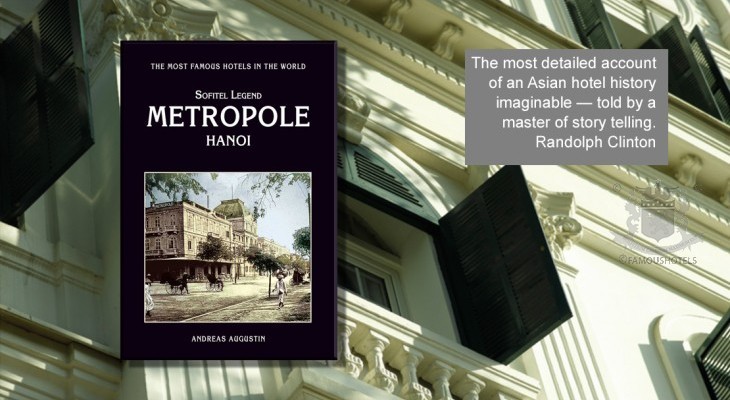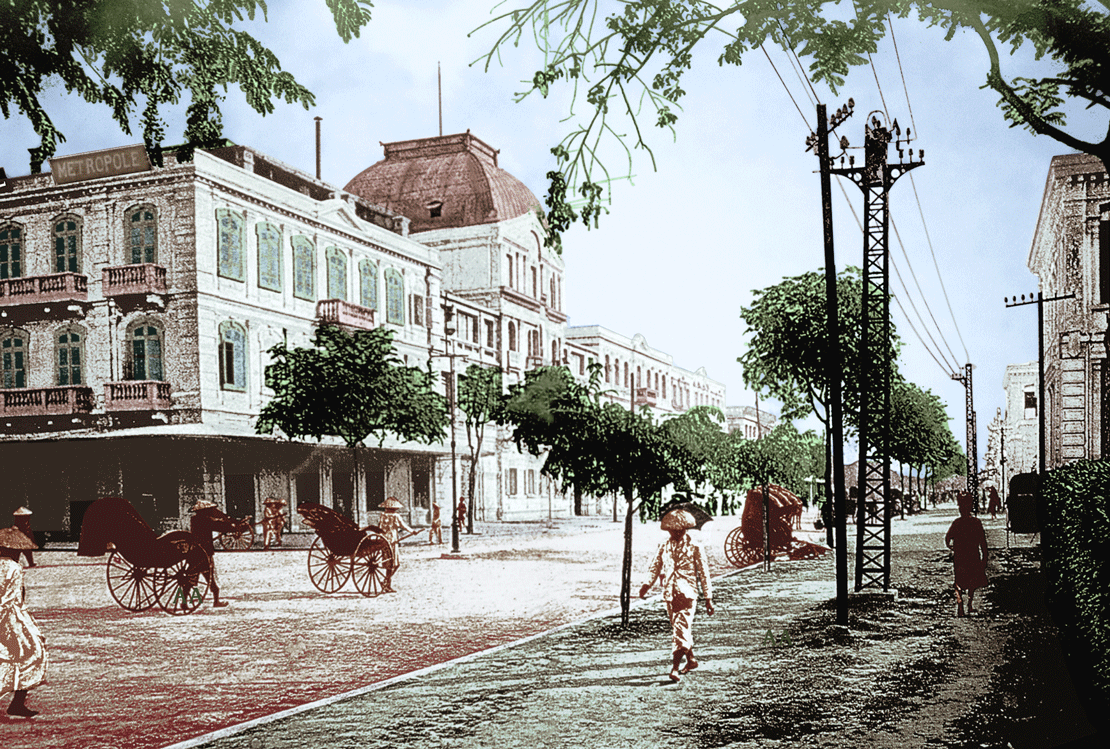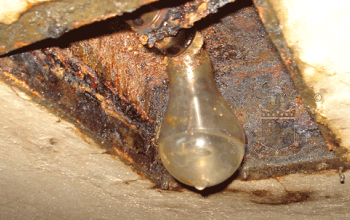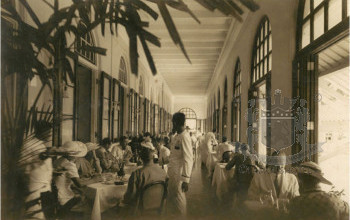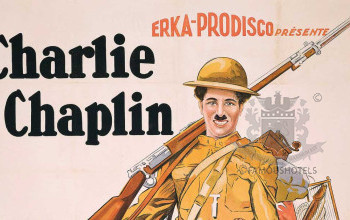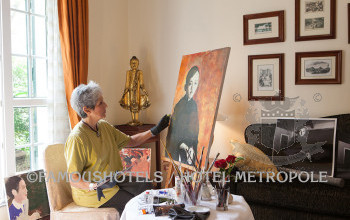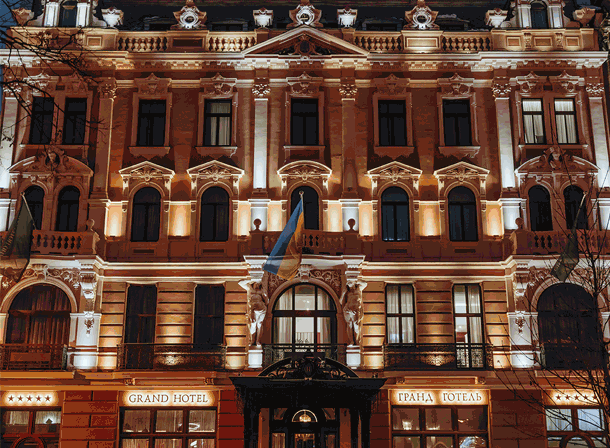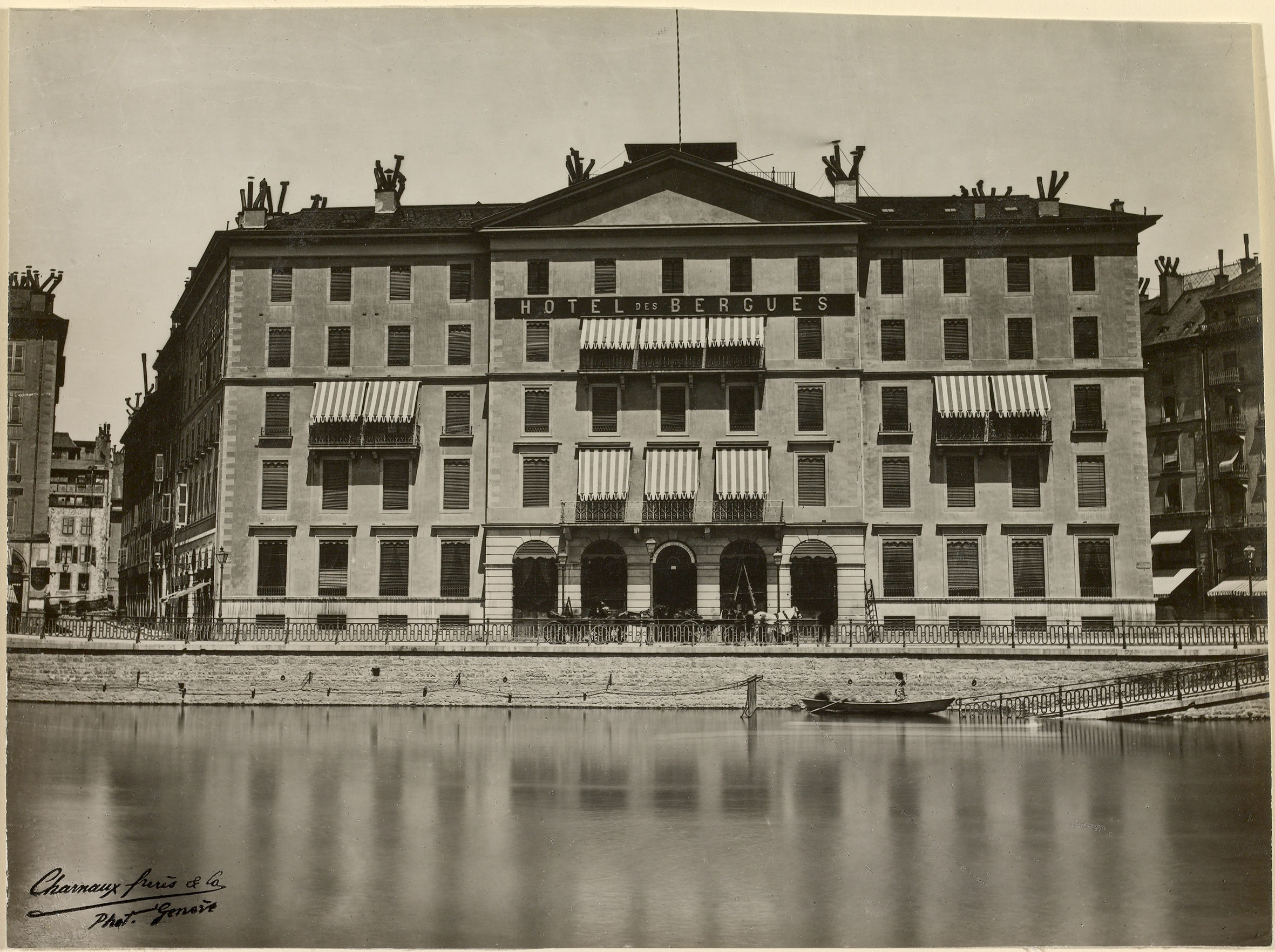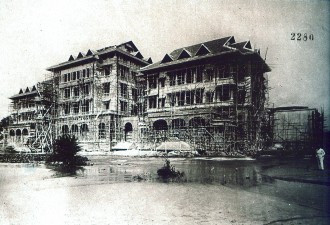Hanoi: The Opening Riddle
( words)
1896! No Problem!
by Andreas Augustin
In 1996, I received a phone call from Richard Kaldor, one of the first general managers of the newly reopened Hotel Metropole in Hanoi, Vietnam: ‘Could you come and research the history of our hotel?‘
‘Of course,’ I replied like a shot, ‘give me an idea of when it opened?’
‘Well, that’s the problem, ‘replied Kaldor. ‘It was 1896.’
‘That’s no problem,’ I said.
He continued: ‘Let me finish my sentence! — Or maybe in 1906. We simply do not know!’
I have unearthed the original building plans of Raffles in Singapore, which had been lost and missing for over 100 years. It can not be so difficult!
Intrigued, I said yes, I would come to research the hotel’s history and try to pinpoint the exact opening date. I travelled to Hanoi to see the hotel’s archives. But, there was nothing but one old black and white photograph showing the hotel around the turn of the last century. I started to visit the city’s public archives, accompanied by my Vietnamese assistant, Mrs. Tuan Thi Le Diem, a local historian. In Europe, my wife Carola started to search for material. A global team of historians was at work.
Of course we were looking for documents about the building history. Imagine Hanoi 1996: dusty archives. Documents packed in brown wrapping paper. All numbered with reference numbers. But no catalogue, no index to check what is where. Where on earth did the libraries' index cards disappear to? How to find building records, annals and chronicles. I have unearthed the original building plans of Raffles in Singapore, which had been lost and missing for over 100 years. It can not be so difficult!
‘If you don’t have a reference number, we are unable to give you any documents. The numbers are in the reference catalogue. However, I am afraid, we don’t have a catalogue for the archives. Maybe they were all relocated to France in 1954,’ was the standard answer.
1954; that was the year when the French left Tonkin, as Vietnam had been called in colonial times.
I went to Aix-en-Provence, to visit the colonial archives 'Archives d’Outre-Mer'. Here, I accidentally discovered the catalogue. unbelievable. The French had taken the index files with them in 1954. A huge drawers cabinet. May be in fear that it would be destroyed, maybe because they wanted to make it extremely difficult for future researchers to work.
I proudly handed him a list of numbers. Equally excited as I had been, he dashed down various alleys of his archive, more a warehouse filled with papers than a well organised library at that time. He returned with stacks of files. More and more to follow. We opened them cautiously. A request for a building permission of arched lamps in front of the .... YES! Hôtel Metropole! And here a correspondence of the founder of the hotel, Andre Duchamp! What a feeling! Relief! I received and copied hundreds of pages.
Slowly the history of Hanoi and the story of the beautiful capital of Tonkin unfolded. One by one I virtually met the old colonialists. I concentrated on the 1880s. I made the acquaintance of a character called Gustave-Émile Dumoutier, the son of an industrialist, born in France on 3 June 1850. Dumoutier was made Tonkin’s Chief Education Officer on 5 June 1886. He also founded the Académie Tonkinoise. Alongside him, another key protagonist rose from the mists of history: André Ducamp, a business man in Hanoi in the 1890s.
Gustave-Émile Dumoutier and André Ducamp formed an alliance to build the Hotel Metropole. But when did they open it? After meticulous archival research, I was able to prove that in 1896 and 1897 the Hanoi Hotel was the only notable hotel in the city. The guidebooks of that time didn’t know anything of a Metropole Hotel either. Slowly I narrowed it down and continued to work myself through time.
We concentrated on 1902 and 1903. Suddenly the hotel appeared. It was mentioned in every guide book, in newspapers and travel articles. In the British Library we found a 1902 account of the hotel from a certain Alfred Cunningham, the founder of Kong Kong's South China Morning Post, who was among the Métropole’s first guests. He had been clearly impressed: ‘The most important hotel in Hanoi is the Hôtel Métropole. It is a splendid building, only very recently erected, and is situated on the boulevard Henri-Rivière, immediately opposite the Résidence Supérieure.’
Bingo!
From now on the search went backwards. To cut a long story short: we were able to pinpoint the opening date on the month. During the first weeks of August 1901, the Grand Hotel Metropole Hanoi had opened its doors. It had become the joint venture of André Ducamp and Gustave-Émile Dumoutier. Ducamp became its first general manager.
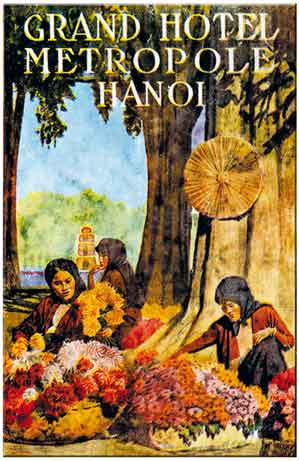
Now our search concentrated on related material like photographs, luggage stickers, postcards, the usual memorabilia. We stumbled upon a picture of an electric tramway carrying Hôtel Métropole advertisements on their roofs. From the United States we received a 1920s label of the 'Grand Hotel Metropole', designed by Dan Sweeney. We found out that he was a seasoned illustrator who drew posters for leading Asian hotels, among them The Oriental in Bangkok, The Peninsula in Hong Kong, the Majestic, the Astor House and the Palace in Shanghai, the Manila Hotel and the Continental Palace in Saigon). Read more about him here.
Slowly I was able to paint a picture with figures and facts. The book took on shape. The characters of the past started parading through the pages in the glimmering light of a new rising wealth, created by an unbelievable rubber boom.
We discovered a charming link to the Hotel Scribe in Paris. Both are managed by Sofitel, both hotels can today claim that they are 'historically listed' as the premiere venues for "moving pictures". The Scribe even housed the world premiere, while the Metropole was Indo-China's first venue to show movies. We found out that the restaurant cars between Hanoi and the cities of Vinh, Hue and Tourane in the south were operated by the Compagnie Française Immobilière, the parent company of the Hotel Métropole. Suddenly astonishing printed material appeared and we started getting an pictorial impression of the hotel in the past. We were able to prove that the Metropole was visited by Charlie Chaplin and his wife Paulette Goddard.
After about two years we were able to establish the first fine press kit with an extensive history section; the hotel's first PR manageress Sarah Grant helped building it.
Authors like Somerset Maugham and Graham Greene and many others had been spending time at the hotel. The father of Vietnam, Ho Chi Minh had wonderful stories connected with the hotel.
Touching the 1950s, 60s and 70s we entered a field of research were we could relate to people who had actuylly been working at the hotel during that time. They were still alive. Former staff turned out to visit me at the hotel for an interview. They brought their memoirs along with photographs and we had a great time reviving the good old past. Guest from the past appeared as helpful allies to complete the picture.
THE PATH OF HISTORY
During the Vietnam war Jane Fonda spent weeks in her suite at the hotel. She, like many others, was seeking refuge at the hotel's bunker which has been reopened. To discover that Joan Baez had cheered the spirits by singing in the hotel's bunker during US air raids led to a completely new and encouraging effort. Now we wanted to see if the hotel's air raid shelter can be reopened. Its restoration to an accessible museum led to the creation of the PATH OF HISTORY, today the hotel's living museum, where trained Ambassadors of History give tours twice a day. With all our efforts we have turned the hotel’s history into a powerful sales concept.
The book has been very well received. Over the next years – together with the hotel – famoushotels.org developed a history PR scheme, based on our research. Today the hotel has suites named after these outstanding personalities. We have supplied the photographic documents and the related stories.
The old photograph of the hotel which I had found in the hotel in the beginning has been carefully restored and coloured. It still graces the cover of our 160 pages hard-case book. The first edition appeared in 1998. Ever since we have updated every edition with new material. While we are speaking the next edition appears – and only last week we had the pleasure of acquiring another great photographic document – for the book's next edition. The family of the first owner has submitted photographs ... very exciting!
Ever since the Metropole in Hanoi is one of the truly elegant hotels of South East Asia — one of the 'Maidens of the East', situated in the busy capital of Hanoi. It was a long way from Indochina to indochic.

